Process designated as Important Cultural Properties
"Important Cultural Properties" is a nationally designated "cultural heritage" that is born in Japan's long history and is indispensable for understanding its history, traditions and culture.
The important cultural properties of the building fall into one of the categories "Good design, good technology, high historical value, high academic value, excellent local characteristics".
Bandai Bridge was recognized by the country for its value in design and technical excellence.

Outline and area designated as Important Cultural Properties
| 1.Name | Bandai Bridge |
|---|---|
| 2.Location | Between Shimookawamaedori/Kawabatacho and Bandai, Chuo Ward, via National Route 7 |
| 3.Structure | Reinforced concrete with six arches structure |
| 4.Length | 306.9m |
| 5.Width | 22.0 meters |
| 6.Feature |
|
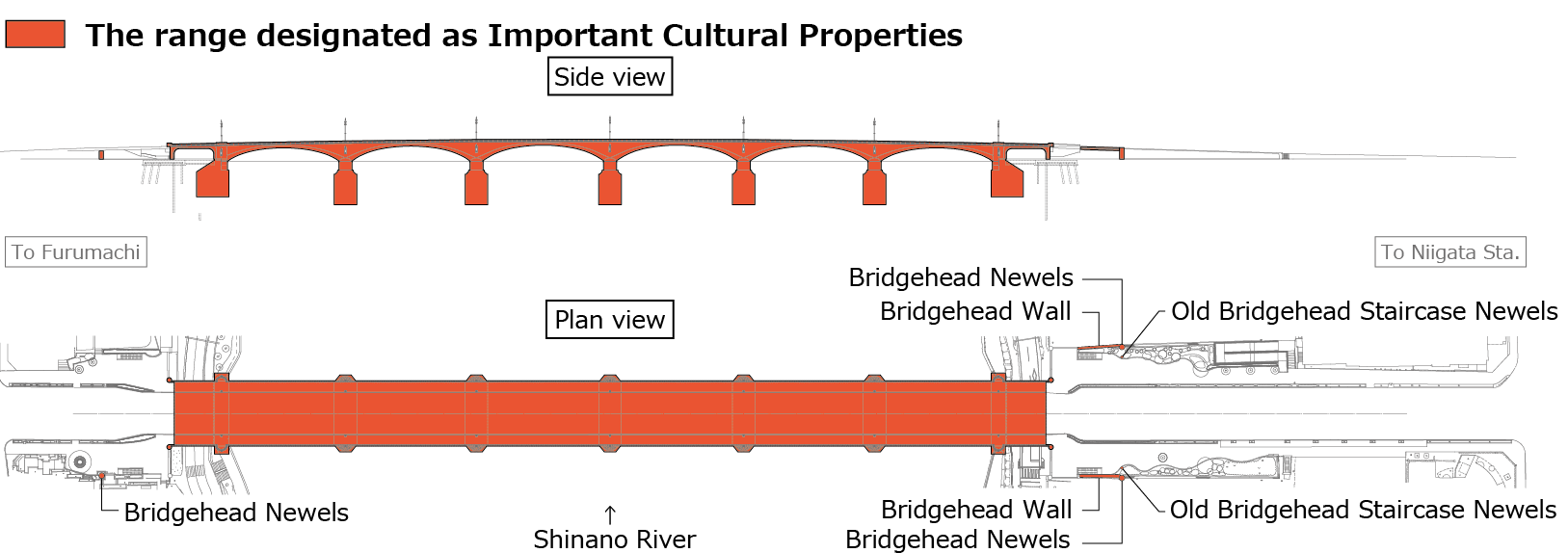
Commentary of the range designated as Important Cultural Properties
- ①Bridge Railings
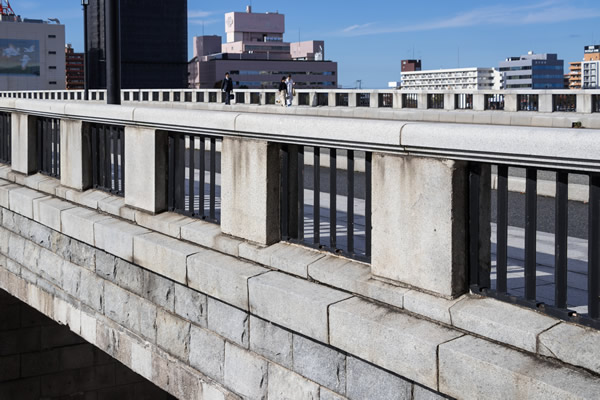
When the bridge was first constructed, the cast iron fences of the railings were cast- iron panels with arabesque patterns, but they were removed due to the collection of metal for the Pacific War effort. The arabesque-patterned panels have been restored and can be found incorporated into the safety railings of the staircases in the bridgehead plaza.
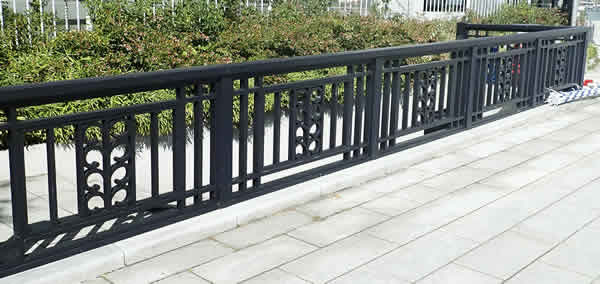
- ②Old bridgehead Staircase Newels
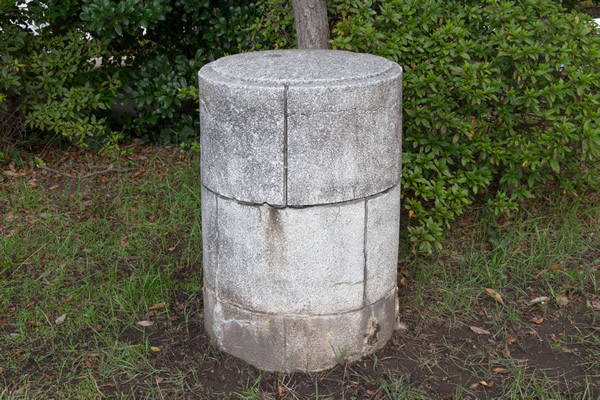
This is a small Staircase newel erected at the bottom end of the bridgehead staircase that was put in place when the bridge was originally constructed. The pillar’s component stone blocks emerged distinct and beautiful after the mortar covering them was cleaned off with water.
- ③bridgehead Newels
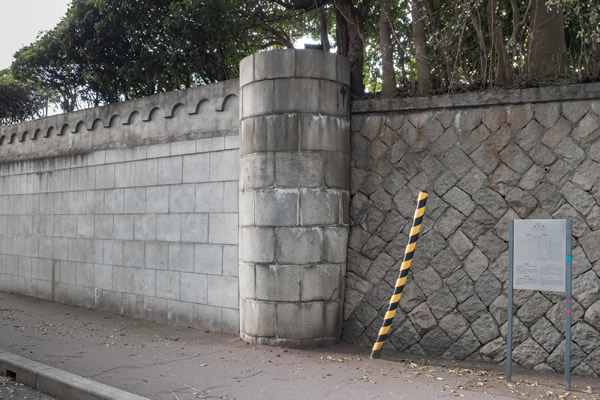
This bridgehead newel is covered with a thin layer of stone that functions as a frame, into which ferroconcrete was inserted. When the bridge was constructed, the newel was erected at the corner of the bridgehead, at the same time as the newel of the bridge itself. Of the five bridgehead newels that were lost in the reconstruction work that followed the Niigata Earthquake of 1964, three along the Shinano River were restored in 2004.
- ④bridgehead Wall
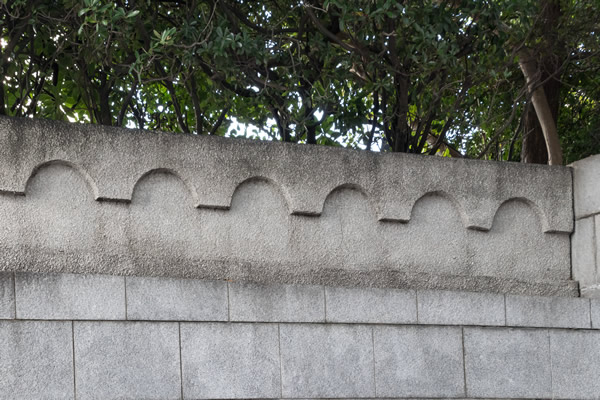
Along the top of the outer part of the bridgehead wall, which runs along to the bridgehead newel on the right bank of the Shinano River, there is a design rendered in the mortar. Consisting of consecutive semicircular arches, this design is called a Lombardia band, it gives the wall a more decorative appearance.
Commentary on restoration project (designated as commemorating the 75th anniversary of Bandai Bridge) following designation of Important Cultural Properties
- ①Panel Lights (Streetlights)
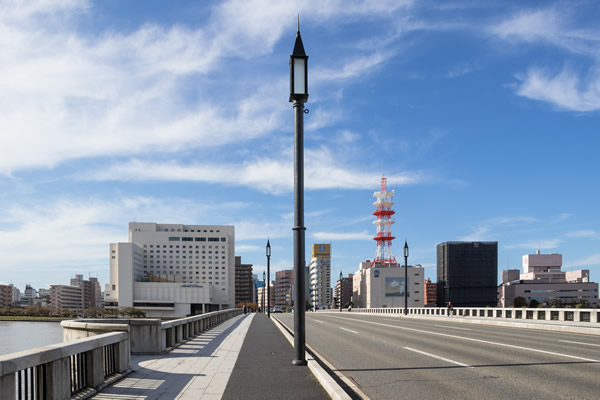 The original streetlights were removed during the Pacific War due to the collection of metal parts for the war effort. In 2004 they were restored faithfully to their original design, based on drawings of the bridge around the time. It was constructed its shape represents efforts to escape from the ornament oriented design of the Meiji era(1868-1912).
The original streetlights were removed during the Pacific War due to the collection of metal parts for the war effort. In 2004 they were restored faithfully to their original design, based on drawings of the bridge around the time. It was constructed its shape represents efforts to escape from the ornament oriented design of the Meiji era(1868-1912).
- ②Spandrel Lights (Bridge Wall Lights)
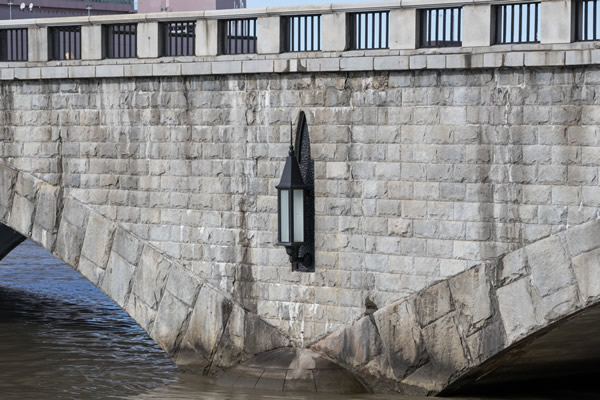
In 2004, the spandrel lights were restored and placed in the spandrel of the Bandai Bridge. The restoration work was strictly based on drawings from the time of its construction, and the lighting is designed to be consistent with the Streetlights on the bridge. When the bridge became operative, there was a lot of river traffic and the original spandrel lights were vital to securing the safety of boats and ships navigating at night and in foggy conditions. The installation cost was 18 million yen donated by citizens.
- ③Bridge Nameplate
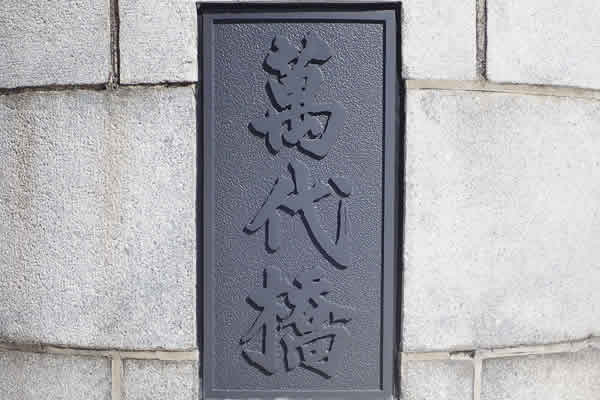
The original cast iron bridge nameplate was replaced by a stone one due to the collection of metal for the Pacific War effort. The cast iron bridge nameplate was restored in 2004, based upon the photos from the time of the bridge's opening.
- ④Safety Fences (on the slope)
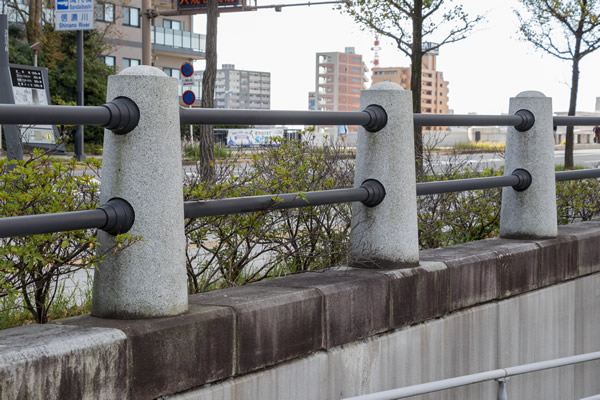
When the bridge was originally constructed, there used to be safety fences and steel handrails attached to the granite columns alongside the old bridgehead staircases. These fences have been reproduced as safety fences along the slope. For the kerbs, granite was used in the restoration and is assumed to have been used in the original bridgehead staircases.